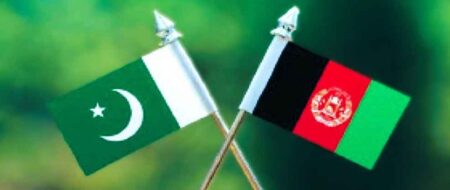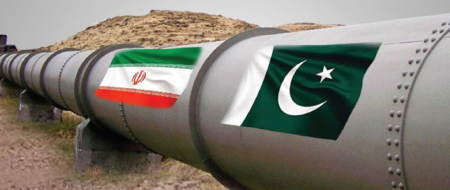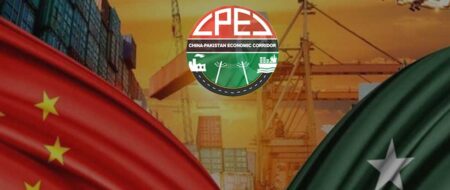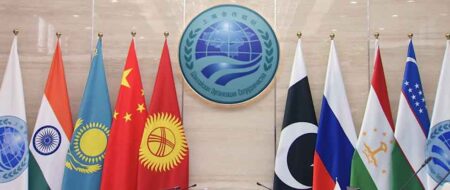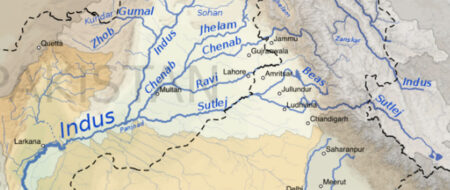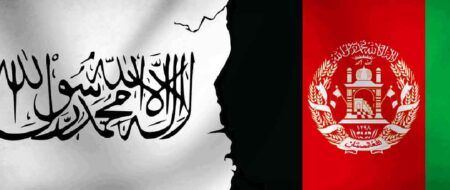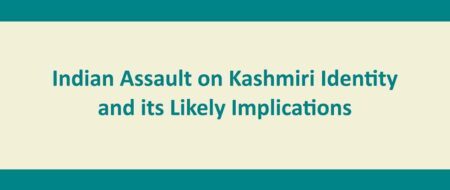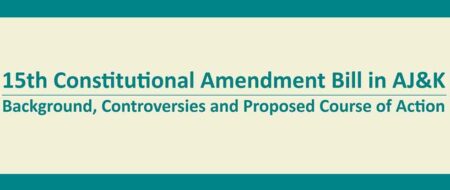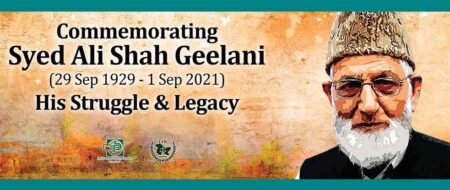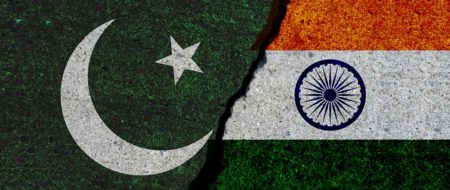Higher Education in Afghanistan
Policy Perspectives , Volume6 , Number2, July – December 2009
Abstract
[Historically, higher levels of learning did not receive due attention in Afghanistan, and while the institutions started taking roots in second half of the 20th century, their progress was badly hampered by foreign aggression as well as infighting. In recent years, there have been some efforts for improvement. However, higher education in present day Afghanistan remains a fragile area, hugely dependent upon foreign assistance, having meager resources and feeble infrastructure. Importantly, the system of higher education being promoted is not in conformity with the traditional and religious value system of the country. Standard of education being imparted also remains very low. While long-term peace is a prerequisite, there is an urgent need to deliberate upon the system of education, particularly at higher levels, and the foundations upon which it has to be established. – Editors ]
Introduction
Higher education is such an imperative and sensitive affair in any society as it leads nations towards higher stages of development. Analyzing the course of a country’s development through the elements of higher education namely, the number of higher education institutions, standard of education, aptitude of teachers, number of students in higher education, number of theses being produced every year and the number of research journals published by the higher education institutes makes it easier to gauge the pace of progress. Higher education is also considered a yardstick because the graduates of colleges and universities provide the future leadership in ideological, educational, political and national life. They also play a key role in determining the characteristics of a society, driving it towards rise or fall, or steering it towards right or wrong directions.
In this context, a study of evolution of higher education in Afghanistan would be highly significant at this crucial juncture of history when putting Afghan society on the right track of development is in the interest of world community at large. The initiatives in higher education in Afghanistan, their merits and demerits and the current trends that would implicate the future direction of development in Afghanistan also need to be studied and analyzed.
Higher education in Afghanistan: a historical perspective
Since Ahmed Shah Abdali laid down the foundation of modern Afghanistan in 1747, the country passed through a phase of in-fighting and resistance against British attempts at colonization. The situation prevailed until 1868 when Amir Sher Ali Khan came back into power. During this period, no government tried to establish a system of modern education. Following the old tradition, the people of Afghanistan in the meanwhile kept educating themselves in religious schools and from the lectures of religious scholars and clerics. Thanks to the efforts of Syed Jamaluddin Afghani, modern education got off to a start during the reign of Amir Sher Ali Khan (1863-1866 and 1868-1879). However, no institution of higher education could be established even then.
The situation persisted during the reign of three subsequent rulers-Amir Abdul Rehman Khan (1880-1901), his son Amir Habibullah Khan (1901-1919) and his grandson Amir Amanullah Khan (1919-1929). The number of people with higher education in Afghanistan remained marginal comprised of those who either completed their education from Turkey, India and the United Kingdom, or they were Turkish or Indian citizens and moved to Afghanistan during that time. However, some Afghan students were sent to France, Germany, Russia, Turkey and other countries during the reign of Amir Amanullah Khan.
Higher education started in Afghanistan in 1932 when Zahir Shah’s father Mohammed Nadir Shah (1929-1933) established the faculty of physical sciences in Kabul. It was headed by a Turkish professor, Dr. Faqih Kamil Baig.The same faculty became the foundation stone of the Kabul University in 1946, and several new faculties were established with the passage of time or according to the need. The second institution of higher education was established in Jalalabad in 1963-31 years after the faculty of physical sciences had come into being. Later on, it was called the Nangarhar University. The Polytechnical University of Kabul was the third higher seat of learning comprising three faculties: Construction, Electromachanics and Geology and Mining.[1] It was established in Kabul with the cooperation of the former Soviet Union in 1969.
A new ministry of Higher Education and Ideological Training was established in 1977 and all the higher education institutions along with the vocational institutes were placed under its administration. Earlier, all the educational institutions including the institutes of higher education were regulated by the ministry of education.[2]
In 1987, Balkh University with the departments of engineering, history and literature, economics, agriculture and medicine was established in Mazar-e-Sharif during the reign of Dr. Najibullah Ahmadzai (1986-1992). Later, the government of Najibullah founded the University of Islamic Research in 1988 that was merged with University of Dawat and Jihad in the reign of Prof. Burhanuddin Rabbani in 1992. The University of Dawat and Jihad was transferred from Peshawar where it was run by Prof. Abdul Rasul Sayyaf. It ceased working when the Taliban took over the government in Afghanistan in 1996. Apprehensive of the volatile security situation in the country and the unfavorable changing circumstances, Prof. Sayyaf did not make any effort to resurrect it.
Najibullah founded another university in Herat in 1988 with only one faculty i.e. Persian Literature while he set up the Kandahar University in 1990 that had the faculty of agriculture.[3]
Some of the higher education institutions were transferred from Peshawar to Afghanistan when the Mujahideen took over in 1992. Some of these universities are still working (2009) while some have been relocated and/or merged with other institutions and therefore ceased to exist. A brief introduction of these institutions is following:
- University of Dawat and Jihad: Ittehad-e-Islami Mujahideen-e-Afghanistan (The Islamic Union of Afghan Mujahideen) established this university in the refugee camp of Hijrat Qala, Peshawar under the guardianship and financial support of Prof. Abdul Rasul Sayyaf in 1985. It had the faculties of Sharia and Law, Usuluddin (Islamic Studies), Medicine, Engineering, Education, Arabic Language, Science and Agriculture. It would not be wrong to say that it was the largest and the most dependable institute for the refugees. Many of its graduates are still serving the Afghan society.
This university awarded the membership of Rabita-e-Jamiatul Islamia (the Association of Islamic Universities) and most universities of the world began to accredit its degree and allow its graduates to gain admission. It was relocated to Nangarhar’s Farm Gaziabad in 1995 and was again moved to Kabul where it was merged with Tehqeeqat-e-Islami University (Islamic Research University) in 1996. It was closed as the Taliban came into power.[4]
- The Islamic University: This University was established by Hizb-e-Islami Afghanistan (Hikmatyar) in 1989. In the beginning, it had the faculties of Education and Medicine but later it also offered degrees in Engineering, Agriculture, Sharia and Usuluddin. It was moved to Khost province of Afghanistan after being merged into the Afghanistan University in 2003 during President Karzai’s regime and was renamed to the Khost University. It is still working under the same name.
- Abdullah Bin Masoud University: Jamiat-e-Islami Afghanistan (Rabbani) launched this university in 1991 after the Soviets withdrawal from Afghanistan. Its campus was situated in Chamkani, Peshawar in Pakistan. It had the faculties of Sharia and Usuluddin. This university was relocated to the Takhar province of Afghanistan in 1995 during the regime of Prof. Rabbani. It is still operating under the name of Takhar University.
- The Academy of Islamic Education and Technology: This institute was established by International Islamic Relief Organization (IIRO) of Saudi Arabia in Hayatabad, Peshawar. Earlier, Rabita-e-Aalam-e-Islami (Muslim World League) was also involved in establishing it but later on it was handed over completely to IIRO. This institution was also relocated in Afghanistan during the regime of Prof. Rabbani. It was split into two campuses: one of which stayed in Jalalabad while the other was moved to Herat. This institute also fell into crisis during Taliban rule and was finally merged into other institutions during Hamid Karzai’s government.
Other than the above mentioned educational institutions in Afghanistan, there were many other institutes operating for refugees in Pakistan which were moved to Afghanistan when the Mujahideen came to power and later on ceased to have an independent existence. The Ummahatul Momineen University, established in Peshawar in 1989 was one of the prominent institutes among them. It was run by Tanzimul Khawaheran-e-Musalman[5] (Organization of Muslim Sisters) and had departments of Medicine, Sharia, Literature, Science and Education. It started working as a private university in 1992 after the Mujahideen had seized power in Kabul but did not exist later. Similarly, the Engineering Faculty set up by Coordinating Humanitarian Assistance-an Afghan NGO-worked for a while and then merged with the Herat University during Karzai’s regime.
The Taliban Era
The higher education institutions which were already in a lamentable condition worsened under the Taliban because of their peculiar attitude. There were fourteen institutions of higher education in Afghanistan when the Taliban came to power, but they were reduced to seven during their reign, namely: The Kabul University, the Poly Technical Institute, Medical University Kabul, Herat University, Nangarhar University, Kandahar University, the Academy of Islamic Disciplines and Technology with campuses in Herat and Jalalabad. Among the several problems faced by these institutions, two major problems were:
- The shortage of teachers:There had already been an acute dearth of competent teachers in Afghanistan and they too thought it fit to leave the country when the Taliban established their control in most of the country as Taliban considered worldly education second to nothing, resulting in making most of the university students quit modern education as well. Those who continued their education had to submit to various forms of abuse, indignities and insults. Therefore, the number of university students during this period was hardly more than four or five thousand.
- Financial clutches: The budget allocated to education in general and higher education in particular was limited as the ongoing civil war had put severe constraints on the economy. It led to a depletion of educational facilities such as libraries, laboratories and other educational resources. Computers and other modern aids were out of the question. Proper arrangements of meals for the students who lived in hostels were not provided either.[6] When the students of the medical college in Jalalabad protested against this state of affairs and led a procession, the Taliban opened fire on them.[7]
An outdated syllabus, non-availability of books, virtual detachment from the educational institutions of the other countries, lack of educational and research environment and low salaries that were hardly ever paid on time were some of the other challenges that the higher education institutes faced during the Taliban period and earlier during Mujahideens‘ period. Therefore, the higher education institutions of Afghanistan did not come up to the standards of the institutions of neighboring countries, let alone international standards.
The Karzai Government
When the US toppled the Taliban government and replaced it with Hamid Karzai’s, it took certain steps for improving the higher education system as it did in other areas. In the subsequent pages, the paper discusses the basic information about higher education and the steps that have been taken about it, the challenges and difficulties being faced by this sector in today’s Afghanistan and the approach required to improve the situation.
At present (2009), there are nineteen (19) public sector universities and higher education institutions in Afghanistan.[8] Till 2007, none of the departments in these institutes was offering masters classes.[9] The names of these institutions, their departments, years of establishment, number of male and female and teachers are given in the following table:[10]
| Table I Institutes, Departments/Faculties, Number of Students and Teachers |
||||||||||
|---|---|---|---|---|---|---|---|---|---|---|
| S.# | Instituttions | Estab. | Departments/Faculties | Students | Teachers | |||||
|
M |
F |
Total |
M |
F |
Total |
|||||
| 1 | Kabul University | 1946 | Persian, Agriculture, Literature and Sunnah, Political Science,Science, Sharia, Engineering, Economics, Veterinary, Journalism, General Knowledge Education, Fine Arts, Geography | 7008 | 2012 | 9020 | 435 | 85 | 520 | |
| 2 | Balkh University | 1987 |
Medical, Agriculture, Language and Literature, Engineering, Law and Political Science, Sharia, Education, Economics |
3718 | 1835 | 5553 | 129 | 18 | 277 | |
| 3 | Heart University | 1988 |
Medical, Agriculture, Language and Literature, Engineering, Law and Political Science, Sharia,Education, Economics, Science, Fine Arts |
3283 | 1468 | 4751 | 176 | 30 | 206 | |
| 4 | Kabul Education University | 2004 |
In service teachers, Social Sciences, Languages and Literature, Physics, Physical Education |
2354 | 1380 | 3734 | 109 | 38 | 147 | |
| 5 | Kabul Medical University | 1932 | Medicine, Children, Stomatology | 1990 | 700 | 2690 | 189 | 22 | 211 | |
| 6 | Kabul Poly Technique University | 1960 | Civil Engineering, Geology and Mines, Electro-mechanic | 2594 | 96 | 2690 | 119 | 18 | 137 | |
| 7 | Nangarhar University | 1963 |
Medical, Agriculture, Language and Literature, Engineering, Law and Political Science, Sharia, Education, Economics, Veterinary |
2508 | 275 | 2333 | 290 | 8 | 298 | |
| 8 | Khost University | 2003 |
Medical, Sharia, Law and Political Science,Education, Computer Science |
6171 | – | 1671 | 174 | – | 88 | |
| 9 | Baghlan University 1 | 1993 | Agriculture, Education | 1030 | 350 | 1380 | 40 | 4 | 44 | |
| 10 | Alberoni University | 1998 |
Medical, Agriculture, Language and Literature, Engineering, Law and Political Science, Sharia, Education, Economics, Veterinary |
1330 | 20 | 1350 | 41 | – | 41 | |
| 11 | Kandahar University 2 | 1990 | Medical, Engineering, Agriculture, Education | 1270 | 30 | 1300 | 84 | 6 | 90 | |
| 12 | IHE, Jowzjan | 2003 | Chemical technology, General Knowledge, Physics, Geology | 798 | 362 | 1160 | 35 | 13 | 48 | |
| 13 | Parwan Higher Education Institute | 1999 | Education | 885 | 165 | 1045 | 19 | 7 | 25 | |
| 14 | Takhar University3 | 1955 | Education, Agriculture, Language and Literature, Sharia, Engineering | 800 | 118 | 918 | 33 | 3 | 36 | |
| 15 | KunduzHigher Education Institute 4 | 2005 | Education,Agriculture | 450 | 142 | 592 | 11 | 5 | 23 | |
| 16 | Faryab Higher Education Institute5 | 1987 | Education | 283 | 244 | 527 | 20 | 11 | 33 | |
| 17 | Bamyan University 6 | 1997 | Agriculture,Education | 382 | 8 | 390 | 30 | 2 | 32 | |
| 18 | Paktia University | 2004 | Agriculture, Education | 320 | – | 320 | 17 | – | 17 | |
| 19 | Badakhshan IHE | 2003 | Education | 140 | 134 | 274 | 8 | 4 | 12 | |
| Note: IHE=Institute of Higher Education, M=Male, F=Female | Total | 31696 | 9197 | 49115 | 1948 | 269 | 2250 | |||
1- This University was established when Mujahideen took over the country, suspended in Taliban reign and re-established in 2003.
2- Formerly, this institution was working under the Ministry of Education. It was upgraded in 2005 and brought under the Ministry of Higher Education.
3- Former Abdullah bin Masoud University.
4- This institute was formerly established for Teacher’s Training short term courses in 1967. It was upgraded to Institute of Higher Education and brought under the Ministry of Higher Education.
5- This institute was established in 1977 and upgraded in 1987. It is basically a teacher’s training institute.
6- This university was established by a Shiite organization Hizb-e-Wahdat in 1997. In 2003, it was handed over to the Ministry of Higher Education on the request of Hizb-e-Wahdat.
It may also be noted here that the number of students gaining admission in higher education institutes is increasing every year as the number of graduates from secondary schools is growing. Four thousand (4,000) students submitted their forms for higher education in 2004 which sharply increased to forty thousand (40,000)-almost 10 times-in 2005. The number reached fifty two thousand (52,000) in 2006 and over fifty seven thousand (57,000) in 2007.
Thus a country with 31 million population has nineteen (19) institutions of higher learning which are currently in access to only 49115 students. At present there are 9197 (almost 19 per cent) female students and hardly 12 per cent female teachers.
Karzai Government’s Initiatives:
The ministry of higher education in Afghanistan has published a detailed report titled “Activities of Ministry of Higher Education: from the Beginning of the Interim Government of Afghanistan to the Parliamentary Election.” It highlights the following important steps that the government undertook:
Ministry of Higher Education and its Powers: The name of the ministry has been changed from ‘the Ministry of Higher Education and Vocational Training’ to ‘the Ministry of Higher Education.’ It effectively means that the 42 institutions of vocational training, which had been in its domain, were taken away from it and all the institutions of higher education were placed under it. Besides, some of the teachers’ training institutions that had bachelor classes and worked under the Ministry of Education were also given under the control of the Ministry of Higher Education.
Infrastructure: The basic infrastructure for education had been completely destroyed because of the war that continuously ravaged Afghanistan for three decades. However, from 2001-2005, the water and electricity supply systems along with other facilities were improved for these institutes while some of the buildings were reconstructed so that the process of education could proceed.
Strategic Development Plan:[11]The ministry devised a ten year (2005-2015) plan for the growth of higher education and first, second and third phases of the plan span two years, three years and five years respectively. Clear goals were set for each phase. Some of these goals are:
- Standard of Education: Improvement of the standard of education, provision of required facilities in educational institutes, capacity building, taking measures to maintain the standard, and efforts to reform the syllabus.
- Reforming the System and Institutional Growth:Improving upon planning and financial affairs; making institutions autonomous in financial and educational affairs through implementing the newly developed law for higher education.
- Access to Higher Education: Encouraging the private sector to establish institutions for this purpose, introducing two shifts in the government-run institutions, and setting up new public sector institutions.
- Providing Financial Resources: one of the most important goals for the plan is to provide financial resources for higher education by employing different means and resources.
The salient features of the detailed program laid out by the Ministry of Higher Education for achieving these goals are:
- Establishment of 34 institutions in the capital cities of the 34 provinces for providing two years of technical and professional education;.
- Grading up the higher education institutions of Badakhshan, Kunduz, Baghlan, Jowzjan and Faryab and giving them university status;
- Establishing a higher education institute in Ghazni;
- Starting MA Persian and MA Pashto classes in the Kabul University;
- Raising the standard of Kabul University to the level of international institutions;
- Conducting surveys for establishing the department of Hindi language in the Nangarhar University;
- Elevating the faculty of Sharia of Kabul Un iversity to Islamic Studies University status;
- Enabling the institutions of Afghanistan to accommodate one hundred thousand students by 2016;
- Making English the medium of instruction in all the universities of the country by 2015;
- Raising the number of teachers holding PhD to 20 per cent and the ones with MA degrees to 50 per cent by 2016;
- Establishment of research centers in the universities;
- Establishment of IT centers in all the universities;
- Increasing the number of faculties in evening shift.
Initiatives of the Ministry of Higher Education
Afghanistan Ministry of higher Education has come up with the following initiatives in yester years:
- Legislation for Higher Education: The ministry has prepared a new law for the better administration of higher education system and for adapting it to the standards of developed countries. The draft for law was sent to the Ministry of Justice in 2005 for legislation and was approved in August 2007.
- Introduction of Credit System: Credit system has been introduced and implemented in colleges and universities so that the overall character of education can be improved and the educational system can be synchronized with international standards.
- Syllabus: The syllabus used in the institutions of Afghanistan is quite old and in most cases, it has not been updated even in the areas of medicine and engineering. In order to assess the situation and bring much needed changes in the syllabus, seminars have been held in which international and Afghan scholars participated. The exercise helped these scholars to identify the issues and develop some basic principles which will enable different departments and faculties to develop syllabus in their own areas. While developing the new syllabus, the authorities would make sure that on the one hand it should be in line with the religio-cultural and social values of Afghan nation and on the other hand, it should meet the requirements of the international standards and national and international markets.
- Laboratories: Six laboratories have been made fully or partially operational in the engineering, agriculture, veterinary, science and some other departments of different universities with the cooperation of America, Japan, France and Germany.
- Libraries and IT Facilities: The war had completely destroyed or badly damaged the libraries of colleges and universities. Although a lot of libraries may not be fully stocked with many books as of yet, most of the institutions have the rudiments of libraries now. Furthermore, these libraries have been equipped with computers and other resources for institutional reforms, students’ benefit and journalistic activities while Kabul University, Poly Technical University of Kabul, Herat University and Balkh University have been provided internet facilities. Moreover South Korea has provided financial and technical assistance for the establishment of the most modern IT centre in the Poly Technical University of Kabul.
- Collaboration with the Universities of other Countries:The support and patronage of the US and other countries have made it possible for Afghan universities to establish collaboration with the universities of the US, Germany, India and European countries etc.
Following table depicts the details of associations with the libraries and universities of other countries.
- Focus on Teaching Department: The following measures have been taken for the capacity building of teachers in higher education.
- Retaking Former Teachers: Inviting 15 former Afghan university professors from foreign countries to Afghanistan for six months to one year to teach in universities;
- Raising Teachers’ Salaries: The Ministry increased higher education teachers’ salary which is three times the salary they previously earned. [12]
- Foreign Scholarship for Teachers and Students: Until 2007, the ministry sent 627 teachers and students for higher education and short term training courses to foreign countries. It included 2 scholarships for PhD, 15 for masters’ degree and 73 for graduation. Other scholarships are arranged for short term training courses, conferences, and study tours for position holder students. In these study tours students visited America, Germany, India and other countries.[13]
This is the state of affairs of the higher education in Afghanistan. It is pertinent at this point to discuss the difficulties and problems this sector is facing and the expectations of Afghan people from the Ministry of Higher Education.
Table II
Institutions, Number of Books and Computers and Collaborating Countries
| S. # | Institutions | Number of books in Library | Number of computers | Countries of Collaborating Universities |
| 1 | Kabul University | 7,000 | 500 | Germany, USA |
| 2 | Kabul Medical University | 2,500 | 30 | Japan, France, USA |
| 3 | Kabul Education University | 15,000 | 60 | Japan, USA |
| 4 | The Polytechnic University of Kabul | 72,000 | 165 | – |
| 5 | Nangarhar University (Jalalabad) | 4,000 | 70 | – |
| 6 | Heart University | 40,000 | 100 | Germany |
| 7 | Balkh University (Mazar-e-Sharif) | 25000 | 200 | Pakistan, Germany, USA |
| 8 | Kandahar University | 18000 | 10 | – |
| 9 | Takhar University | 5000 | 24 | – |
| 10 | Alberoni University | 2000 | 15 | – |
| 11 | Bamyan University | 6000 | 30 | Switzerland |
| 12 | Khost University | 3000 | 50 | Germany |
| 13 | Paktia University | 3000 | 5 | – |
| 14 | IHE, Baghlan | 700 | 0 | – |
| 15 | IHE, Parwan | 4000 | 27 | France |
| 16 | IHE, Jowzjan | 3000 | 17 | – |
| 17 | IHE, Kunduz | 4000 | 12 | – |
| 18 | IHE, Faryab | 3000 | 8 | – |
| 19 | IHE, Badakhshan | 2500 | 2 | – |
Note: (-) =No collaboration, IHE=Institute of Higher Education
Source: Ministry of Higher Education, “Activities of Higher Education: from the Beginning of the Interim Government of Afghanistan to the Parliamentary Election,” 1-3.
Challenges and Expectations
Professional Aspect
Standard of Education: The basic problem is lack of standard education in higher classes. Some of the reasons for this deplorable situation are:
- Syllabus and textbooks: The guidelines for the syllabus are quite old. This situation is even more critical in the faculties of Medicine, Engineering and Agriculture as the rate of advancement throughout the world in these fields is fast-paced. Designing syllabus, selection of subjects for different levels and developing course outlines are not huge problems. However, the government is yet to initiate an integrated process of benefiting from the experience of teaching science and other modern subjects in other countries.
The real inhibitor, in fact, is the availability of textbooks in the native languages of Afghanistan for the students and teachers who do not have the ability to consult the books published in other languages. Since the libraries are not regularly updated in Afghanistan, these books are not even accessible to those who can benefit from them.
- Shortage of Competent Teachers: Another reason behind substandard education is that skilled teachers are not available in sufficient numbers. The following table depicts the situation in 2005:
Table III
Number of Teachers and their QualificationsS. # Institution PhD MA/MSc BA/BSc Total Grand Total M F M F M F M F 1.
Kabul University 47
1
134
13
214
81
395
90
485
2.
Kabul Medical University 4
0
131
15
52
7
187
22
209
3.
The Polytechnic University of Kabul 36
0
71
18
10
0
117
18
135
4.
Kabul Education University 6
1
47
11
59
27
112
39
151
5.
Paktia University 1
0
1
0
8
0
10
0
10
6.
Bamyan University 2
0
8
0
21
5
31
5
36
7.
Takhar University 1
0
3
0
20
0
24
0
24
8.
IHE, Jowzjan 0
0
15
0
21
13
36
13
49
9.
Balkh University 4
0
70
11
100
36
174
47
221
10.
IHE, Faryab 0
0
1
0
19
10
20
10
30
11.
IHE, Badakhshan 0
0
1
0
4
7
5
7
12
12.
Alberoni University 1
0
4
0
38
1
43
1
44
13.
Nangarhar University 8
0
100
6
147
2
255
8
263
14.
Baghlan University 0
0
0
0
20
2
20
2
22
15.
IHE, Kunduz 0
0
1
1
12
4
13
5
8
16.
Heart University 1
0
26
4
107
19
134
23
157
17.
Kandahar university 0
0
11
2
43
2
54
4
58
18.
Khost University 3
0
16
0
18
0
37
0
37
19.
IHE, Parwan 0
0
4
0
5
4
9
4
13
Note: M=Male, F=Female, IHE=Institute of Higher Education.
Source: Ministry of Higher Education, “Activities of Higher Education: from the Beginning of the Interim Government of Afghanistan to the Parliamentary Election.” 6.
Analyzing data in table III shows that the teachers with PhD, Masters and BA degrees were 6 per cent, 36 per cent, and 58 per cent (1138) respectively. Moreover, most of the teachers with a bachelor’s degree, which comprises the majority group, were the products of the institutions where the standard of education needs a lot of improvement. This problem is getting worse because older people are resisting the induction of younger and better qualified individuals. Raising the standard of higher education institutions would require avoiding hiring teachers with only bachelors’ degree. At least, a policy needs to be devised to require the teachers with graduation to attain a post graduate degree within a specified period of time.
Corruption: Besides the shortage of competent teachers, there is a moral dimension to the problem also. There are incidents of some teachers sexually harassing female students as Mulali Usmani, the Editor of an NGO working for women’s rights, has pointed out, “some teachers at the Balkh University have made illicit demands on some of their students in return for high grades.” Dr. Barzeen Mehar, a teacher of the same university, did not repudiate these allegations. In his words, credit system is one of the reasons for a rise in moral corruption as a teacher can call upon students at any time in this system and thus it allows greater interaction for making such demands.[14]
Some teachers are also involved in corruption by giving good grades to students for monetary benefits. Many students reported that they were asked to pay one hundred dollars for getting passing marks. The University administration is said to be making sincere efforts to overcome corruptions of this kind.[15]
Orthodox System: An outdated orthodox system of administration, recruitment and overall organization of an institution is another stumbling block that complicates matters in the already weak system. The people in-charge of educational institutions seem to be interested in maintaining the status quo as young, highly qualified and competent people with innovative ideas are usually denied entry into the system. This administrative model is creating an environment that is not conducive to developing analytical skills in research work, seminars, and conferences.
Weak Infrastructure: The existing 19 public institutions of higher education had over 38000 male and female students in 2005. More than 44000 candidates submitted their admission forms in 2006 but around 17000 were granted admission (less than 40 per cent). The remaining students along with around 82000 fresh graduates from 12th standard in 2007 produced a figure of above 110,000 students seeking admission in these institutions in 2008.[16]
It shows a rising trend of students aspiring to get higher education, leading to an estimation of about a million students applying for the higher seats of learning in the next few years. However, according to the ten-year strategic plan developed by the ministry, these institutes do not have the capacity to accommodate more than 100000 students, meaning that almost 90 per cent of the students would be denied higher education. The plan does not indicate any mechanism of meeting this grave challenge.
Moreover, many of these institutions do not have their own campuses as they are working either in rented houses or temporary quarters so much so that the class rooms in Balkh University, Herat University, Bamyan University, Alberoni University, and in the institutes of Badakhshan, Jowzjan and Faryab are not in adequate number.[17] Many universities also lack basic necessities such as water, electricity and washrooms.
Also, most of the universities do not have hostel facility. The total number of rooms in all the hostels of Afghanistan is 1483 and each of these rooms can accommodate an average of twelve to fourteen students. Thus, the number of students living in hostels does not exceed 17000 and leaves a waiting list of 30000 students, who have to seek lodging elsewhere and have to commute to their institutes via public transport as the universities do not provide transportation facilities. Students, therefore, usually get late for their classes. The absence of agricultural farms for the agriculture departments, experimental schools for the education departments, and hospitals for the medical schools is another example of weak infrastructure.
Meager Resources for Education and their Utilization: Contrary to the facts provided by the Ministry of Higher Education regarding resources being provided for education, most of the institutions have insufficient facilities for laboratories, libraries, textbooks and stationary, so much so that some teachers of the bigger institution such as Kabul University complained that there was a paucity of ordinary teaching aides such as whiteboards, blackboards, markers, chalks etc.[18]
The imbalance between expenditure and outcome, a common problem in all the government departments, is also affecting the Ministry of Higher Education. A large chunk of the developmental budget, sometimes exceeding 60-70 per cent, goes to foreign companies and NGOs. The problem is not limited to the insufficient resources only. The incompetence and lack of initiative shown by the Afghan officials worsen the situation. The availability of foreign scholarships for Afghan teachers and students is an example in this regard. The facts provided by the Ministry of Higher Education show that only 627 scholarships for higher education and short term training programs were availed in 2005, whereas the number of scholarships offered to the Afghans ran in thousands.[19]
The opportunity could not be utilized properly due to the political dissensions and tug-of-war between the Ministry of Foreign Affairs and the Ministry of Higher Education. While Afghanistan can become self-sufficient in the field of education if the scholarships offered by various countries are exhaustively used in the right direction, there is virtually no mechanism or institution that can make an effort to avoid such casualties.[20]
Dependence on Foreign Assistance: Education in Afghanistan is completely dependent on foreign assistance which naturally has many disadvantages. Primarily, the foremost considerations of donors would be their own priorities and goals rather than the needs of the locals. However, it would be counterproductive if the aspirations of the denizens are not fulfilled in their own country.[21] Another hitch in an aid driven system is that it is structurally vulnerable, given that it would go awry as soon as the funds dry out.
The introduction of credit system in higher education in Afghanistan is one of the examples in this regard. The experts of this system are aware of the fact that besides being complicated and expensive, it requires a lot of resources. Even relatively more developed countries do not have enough resources to run it properly so they often transform this system to suit their financial setup. In case of Afghanistan, neither the teachers understand the credit system nor are the administrative staff and facilities capable enough to support it. Therefore, the students can not fully benefit from it, which makes it difficult to get the desired results.
Therefore, keeping the ground realities in mind the Afghan government needs to reshape the imported systems and develop policies for reducing the dependence on foreign aid. Relying on the internal resources for running the system and setting the priorities and goals is the only viable solution to many such problems.
English Medium System: The decision of making English language a medium of instruction in all the universities of Afghanistan is a critical issue that does not correlate with the overall education system. The teachers in preliminary and high schools do not have the capacity to prepare students for universities with English medium system. Analyzing this structural impairment, the question arises whether the decision of switching medium of instruction can develop more viable educational system in Afghanistan.
Centralization: There is a tendency of centralization of power in the institutions of higher education in Afghanistan. For example, even the entry test for admission in many disciplines is conducted by the Ministry of Higher Education, which prepares the same test for the candidates of Medicine and Fine Arts. The appointment of teachers is finalized and the degrees are awarded by the ministry as well. There is a need for a balanced system in which the ministry should oversee all the institutions but at the same time the individual institutes should be granted autonomy to manage their own affairs with relative freedom.
Ideological Aspect
Determining the Objectives: While it is true that a professionally effective education system lays down the foundation for a coherent and integrated society, it is also important to realize that the fundamental ideas of education are different between Muslim and secular societies. A secular society’s entire emphasis is on learning merely technical or professional skills, whereas a Muslim society espouses that the education of Islamic values, beliefs, edicts and ideology is the basic objective in order to fulfill the religious obligations along with learning technical skills.
It is particularly true in case of Afghanistan that has a history of being governed by deep-rooted traditions and rich culture flavored with the religious fervor and activism. Moreover, the wars, continuous instability, infighting and millions of Afghans living in exile for years not only affected the homogeneity in the society but the young generation could not be entirely educated about its history, national identity and the positive and negative aspects of the country as well. In view of these facts, Afghanistan should have at least three objectives for education in general and higher education in particular.
- Maintaining high standards in Arts;
- Complete understanding of religious beliefs;
- Orientation of History, geography and dynamics of the country.
The government needs to realize that policy formation with a western and American mindset would deteriorate the indigenous intellectual and artistic ability rather than developing it. The awareness of the history of religion, country and nation, and the teaching of Islamic Studies has not been a preference for the government. Such a situation only heightens the suspicion of an unseen agenda which is in direct opposition to the Afghan national interest and collective life.
Since no educational system can produce a homogenous society with positive trends of development without granting the socio-cultural and religio-ideological characteristic its due importance while devising educational policy, it may result in segmentation in Afghan society as any effort to overrun this reality has never been accepted or supported by the majority of Afghans.
Local Norms and Traditions:Besides being religious, the Afghan society binds itself with certain traditions and values. Some internal and external policymakers assume that Afghan society can be transformed into a westernized society by implementing co-education, organizing concerts and unnecessary intermingling of boys and girls, and changing dress codes. These approaches do not work in accordance with Afghan culture and society.
In this situation, the students attending these institutions will be despised by their fellow countrymen and the education system will cause a clash which is not in the interest of an already war-torn Afghanistan. In fact, if these policies keep people from sending their children, especially girls, from schools and universities, it would leave the majority of the population uneducated and illiterate. The government, therefore, needs to remove the taint of notoriety of educational institutions, especially the higher educational institutions.
Contrary, there is seemingly no way to counter these trends and activities because it would be viewed as working against the spirit of freedom and democracy. While the objections to these trends are harshly repressed, protests against this generally perceived un-Islamic atmosphere are still witnessed in Kabul.[22]
Even if such traditions do take roots in a couple of big cities, the society at large will resist it. The government needs to realize this ideological dimension and cater for the aspirations of the people in order to avoid further segmentation.
Conclusion:
Undoubtedly, developing institutions in a country like Afghanistan where war has been a continuous way of life for years on end is an uphill task, yet the importance of education in general and higher education in particular demands complete mobilization of government machinery as it is an investment that the future generations will be able to build on.
Therefore, the Afghan scholars, think tanks, educationists and academicians need to deliberate upon the overall dynamics of today’s Afghanistan, current system and status of education in general and higher education in particular to devise a comprehensive education policy. Keeping in mind the contours of this policy, they need to develop a pragmatic and concrete action plan so that the people working for the cause of education reach a clear understanding of educational goals and steps to be taken. This exercise will give the whole nation a sense of direction.
The policy should also guide the government towards to taking revolutionary steps, allocate most of its resources for this department, and utilize the available resources wisely.
Last but not least, nothing constructive can be fully realized as long as Afghanistan is in a state of war and education is no exception. Therefore, it is necessary to bring the war to an end and establish peace on a solid foundation so that growth and development of the educational system can be focused. History of foreign occupation of Afghanistan reveals the fact that development of any sector, let alone the education sector, is not possible without lasting peace which can only be attained if the external forces withdraw from the country.
Bibliography
Habibzai, Hannan. “Growing Demands of [male] Teachers from Female Students,” BBC Pashto.com, July 16, 2006. http://www.bbc.co.uk/pashto/news/story/2006/07/060712_balkh-university.shtml (accessed on July 24, 2009)
Ministry of Higher Education, “Activities of Higher Education: from the Beginning of the Interim Government of Afghanistan to the Parliamentary Election,” Ministry of Higher Education, Kabul. December 2005.
Ministry of Higher Education, “Strategic Development Plan,” Ministry of Higher Education, Kabul. March 2005. http://www.mohe.gov.af/?lang=en&p=plan (accessed July 28, 2009)
Oxfam, “Afghanistan: Development and Humanitarian Priorities,” Oxfam International. January 20, 2008, http://www.oxfam.org.uk/resources/policy/conflict_disasters/downloads/afghanistan_priorities.pdf (accessed on July 21, 2009)
Annexure
Private Institutions of Higher Educations in Afghanistan:
- American University, Afghanistan
- Kardan Institute of Higher Education
- Baakhtar Institute of Higher Education
- Mewand Institute of Higher Education
- Maryam Institute of Higher Education
- Charagh institute of Higher education
- Katib Institute of Higher Education
- Paishgam Institute of Higher Education
- Khatam o Nabeen Institute of Higher Education
- Khawran Institute of Higher Education
- Maulana Jalaluddin Muhammad Balkhi Institute of Higher Education Mazar-e-Sharif
- Khurasan Institute of Higher Education Jalalabad
- Sadat Institute of Higher Education Mazar-e-Sharif
- Renadar Institute of Higher Education Kabul
- Aryana Institute of Higher Education Jalalabad
- Aryana Institute of Higher Education Mazar-e-Sharif
- Dawat Institute of Higher Education Kabul
- Speenghar Institute of Higher Education
[1] For details, please visit, http://www.polytechnic-kabul.org/
[2] Ministry of Higher Education, “Activities of Higher Education: from the Beginning of the Interim Government of Afghanistan to the Parliamentary Election,” 1-3
[3] Ibid. 41-45. For further details, please visit http://www.mohe.gov.af
[4] Information received directly from the teachers and responsible persons of the university e.g. Dr. Muhammad Ismael Labeeb who was Vice President of the university at that time and Prof. Muhammad Naeem Jalili from the faculty of Usuluddin.
[5] Khwaheran-e-Musalman, a Women’s organization, was a sister organization of Jamiat-e-Islami, Afghanistan.
[6] It should remain clear that as per Afghan traditions, the government is considered to be responsible for providing amenities for the students who live in hostels.
[7] The Frontier Post, December 2, 1998. Besides, the students who were participating in that protest shared the stories of this incident with the author personally.
[8] In Afghanistan, higher education institutions are those which offer degree courses for bachelor or above. Now, there are also 17 private sector institutes of higher education and one university in Afghanistan most of which have not started working yet. So their performance has not been discussed in this paper. Yet a list of their names has been provided in the annexure.
[9] The Kabul University is now offering master’s degree in Pashto and Persian.
[10] Ministry of Higher Education, “Activities of Higher Education: from the Beginning of the Interim Government of Afghanistan to the Parliamentary Election,” 7. For details, please visit the Pushto/Persian version of the official website of the Ministry of Education: http://www.mohe.gov.af/
[11] Ministry of Higher Education, “Strategic Development Plan,” Ministry of Higher Education, Kabul, March 2005, http://www.mohe.gov.af/?lang=en&p=plan.
[12] Now Professors and Associate Professors get 15,000 Afghani [315 dollars] and 13,500 Afghani [280 dollars] respectively, and the salaries for three levels of lecturers are 10,500 Afghani (220 dollars), 9,000 Afghani (190 dollars) and 7,000 Afghani (150 dollars) respectively. Similarly, financial assistance of 300, 200 and 100 dollars per month has been announced respectively for PhD teachers per year, MA/MSc teachers and BA/BSc teachers with the assistance of World Bank.
[13]Ministry of Higher Education, “Activities of Higher Education: from the Beginning of the Interim Government of Afghanistan to the Parliamentary Election,” 55-159
[14] Habibzai, “Growing Demands of [male] Teachers from Female Students,” BBC Pashto.com, July 16, 2006,. http://www.bbc.co.uk/pashto/news/story/2006/07/060712_balkh-university.shtml
[15] Ibid.
[16] The boys and girls studying in the schools in Afghan refugee camps located in Pakistan and Iran have not been included in this list.
[17] Ministry of Higher Education, “Activities of Higher Education: from the Beginning of the Interim Government of Afghanistan to the Parliamentary Election,” 103.
[18] Mr. Abdussamad told the author during a discussion in 2005, “The ministry has not done enough to address basic problems. How can there be any education if there are no bathrooms and water in the departments.”
[19]Only 2 scholarships for Doctorate, 15 for Masters, 73 for bachelors and the rest for short term training programs, study tours, conferences and symposiums were availed. (Ministry of Higher Education, “Activities of Higher Education: from the Beginning of the Interim Government of Afghanistan to the Parliamentary Election,” 82-83.)
[20] Oxfam, “Afghanistan: Development and Humanitarian Priorities,” Oxfam International, January 20, 2008,.http://www.oxfam.org.uk/resources/policy/conflict_disasters/downloads/afghanistan_priorities.pdf (accessed on July 21, 2009)
[21] For example, some construction has been done in almost all the faculties of the Kabul University but there is no improvement in the faculty of Sharia. The government makes it clear that it has no funds of its own for the construction and the foreign countries do not want to spend money on Sharia.
[22] Abdul Mateen Aziz Yar, a student of the Engineering in Kabul University, writing in the Weekly Bahar, Kabul, No. 95, May 31, 2006, said “We can see that rather than emphasizing on teaching, the Kabul University is laying greater stress on promoting moral clash and it is clearly visible that moral clash is increasing day by day in the university. I request the Minister of Higher Education to take such steps as would put a stop to this moral crisis. (Weekly Bahar, No. 95, Kabul, May 31, 2006).
Another student, Abaidullah, of the faculty of Social Sciences, talking to Daily Anees, said, “It is observed that some boys harass girls in the university. This problem has created a situation of uncertainty in the society, meaning that people are losing their trust in these educational institutions.” Sosen Najwa, a female student of the same faculty, speaking to the Daily, said, “Harassing girls has become a matter of routine in the Kabul University, whereas high morals and likeable human values should be the driving force in such an institute. Some girls do not want to continue their studies in the university because of this harassment and are forced to sit at home in order to save the dignity and honor of the family and of their own. I demand from the people in charge of the Ministry of Higher Education that they take such steps in the university as would put a stop to the nefarious activities of the individuals who want to keep our sisters from acquiring higher education. (Daily Anees, July 18, 2006).



